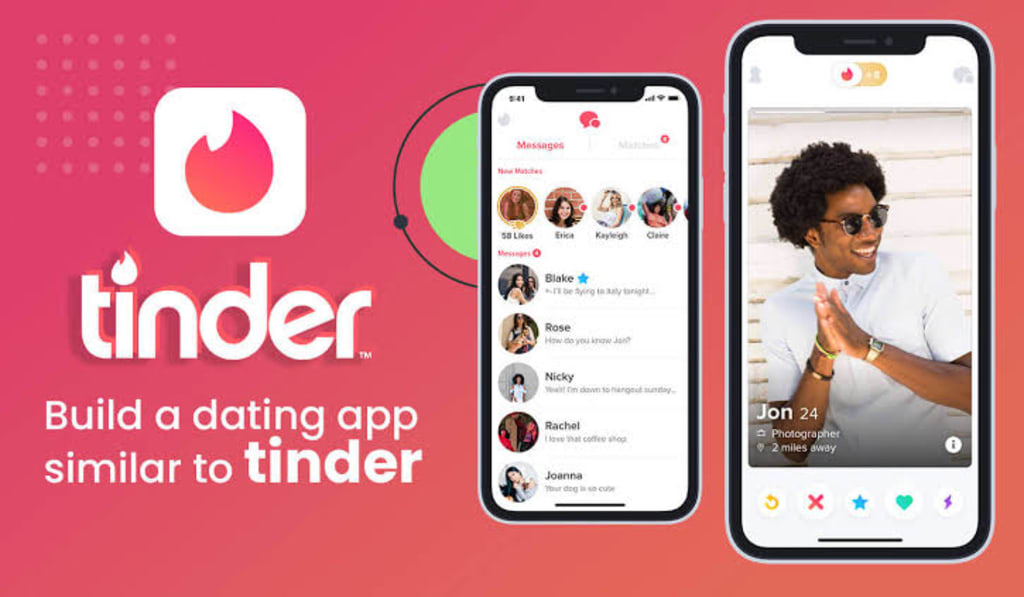
Tinder, a revolutionary mobile dating application, has dramatically transformed the way people meet and connect in the digital age. Since its launch in 2012, Tinder has become synonymous with online dating, boasting millions of users worldwide and fundamentally changing the dynamics of romantic relationships. This article explores the origins, features, impact, and controversies surrounding Tinder, shedding light on its role in contemporary dating culture.
Orgins and Evolution
Tinder was co-founded by Sean Rad, Jonathan Badeen, Justin Mateen, Joe Munoz, Dinesh Moorjani, and Whitney Wolfe Herd in September 2012. It emerged from Hatch Labs, a startup incubator run by IAC. The app's primary innovation was its swipe-based interface, which allowed users to express interest in potential matches by swiping right and disinterest by swiping left. This simple, intuitive design quickly resonated with users, leading to rapid growth and widespread adoption.
Initially targeting college campuses, Tinder's user base expanded exponentially. By 2014, the app reported over one billion swipes per day, cementing its place as a dominant force in the online dating market. Tinder's success can be attributed to its user-friendly interface, gamified experience, and the social validation provided by mutual matches.
## Key Features
### Swiping Mechanism
Tinder's swiping mechanism is its hallmark feature. Users create a profile by uploading photos, writing a brief bio, and specifying preferences such as age range and distance. The app then presents potential matches based on these criteria. The swiping system adds a layer of excitement and immediacy, as users quickly decide whether to like or pass on someone based on their profile.
### Match and Messaging
When two users swipe right on each other's profiles, they form a "match," unlocking the ability to communicate via text messages within the app. This mutual consent model reduces the likelihood of unsolicited messages, making the experience more comfortable for users.
### Passport and Boost
Tinder Passport allows users to change their location and connect with people around the world, broadening the app's appeal to frequent travelers and those seeking international connections. Tinder Boost, a paid feature, increases a user's profile visibility for a limited time, significantly enhancing the chances of getting matches.
### Super Like and Tinder Gold
The Super Like feature, represented by a blue star, lets users show heightened interest in someone, signaling a stronger intent to connect. Tinder Gold, a premium subscription service, offers additional benefits such as seeing who has liked your profile before swiping, unlimited swipes, and the ability to rewind on accidental left swipes.
## Impact on Dating Culture
### Accessibility and Convenience
Tinder has made dating more accessible and convenient than ever before. The app's mobile-first approach allows users to browse potential matches and engage in conversations on the go. This accessibility is particularly appealing to busy professionals and individuals in urban areas where meeting new people organically can be challenging.
### Casual Dating and Hookup Culture
Tinder is often associated with casual dating and hookup culture, a perception reinforced by its quick, swipe-based matching system. While the app caters to various relationship goals, from casual encounters to serious partnerships, its emphasis on physical appearance and immediate attraction aligns with the preferences of users seeking short-term connections.
### Expanding Social Networks
Beyond romantic relationships, Tinder has facilitated the expansion of social networks. Users can meet new friends, explore local events, and even find travel companions through the app. This versatility has contributed to its popularity among a diverse user base.
## Controversies and Criticisms
### Objectification and Superficiality
One of the most significant criticisms of Tinder is that it promotes objectification and superficiality. The swipe-based interface encourages users to make snap judgments based on appearance, potentially reducing individuals to their physical attributes. Critics argue that this focus on looks undermines deeper connections and meaningful interactions.
### Safety and Privacy Concerns
Safety and privacy have been ongoing concerns for Tinder users. The app's geolocation feature, while useful for finding nearby matches, can also expose users to privacy risks. Instances of harassment, catfishing (where someone pretends to be someone else online), and even assault have raised questions about the app's security measures. Tinder has taken steps to address these issues, including the introduction of safety features like photo verification and in-app emergency assistance.
### Mental Health Implications
The gamified nature of Tinder, with its constant stream of potential matches, can have implications for mental health. The instant gratification of swiping and matching can lead to addictive behaviors, while the possibility of rejection can impact self-esteem and mental well-being. Some studies suggest that frequent use of dating apps like Tinder is associated with increased feelings of loneliness and dissatisfaction with one's dating life.
### Gender Dynamics
Tinder has also been scrutinized for reinforcing traditional gender dynamics. Research indicates that men and women often experience the app differently, with men typically initiating more conversations and women receiving a higher volume of messages. This disparity can contribute to a gender imbalance in user experiences, influencing how people perceive and engage with the app.
## The Future of Tinder
As Tinder continues to evolve, it faces the challenge of balancing innovation with user safety and satisfaction. The app's developers are constantly exploring new features and enhancements to keep users engaged. Recent additions, such as video chat and interactive in-app events, demonstrate Tinder's commitment to staying relevant in a competitive market.
Looking ahead, Tinder aims to address some of its most pressing criticisms. Initiatives focused on improving safety, fostering meaningful connections, and promoting inclusivity are likely to shape the app's future trajectory. By leveraging advances in artificial intelligence and machine learning, Tinder may refine its matching algorithms to better align with users' preferences and relationship goals.
## Conclusion
Tinder has undeniably revolutionized the dating landscape, offering a convenient and accessible platform for people to meet and connect. Its impact on dating culture, while multifaceted, underscores the app's role in shaping how modern relationships are formed. Despite its controversies and criticisms, Tinder remains a powerful tool for navigating the complexities of romantic and social interactions in the digital age. As it continues to innovate and adapt, Tinder will likely remain a central player in the ever-evolving world of online dating.
About the Creator
Enjoyed the story? Support the Creator.
Subscribe for free to receive all their stories in your feed. You could also pledge your support or give them a one-off tip, letting them know you appreciate their work.





Comments
There are no comments for this story
Be the first to respond and start the conversation.